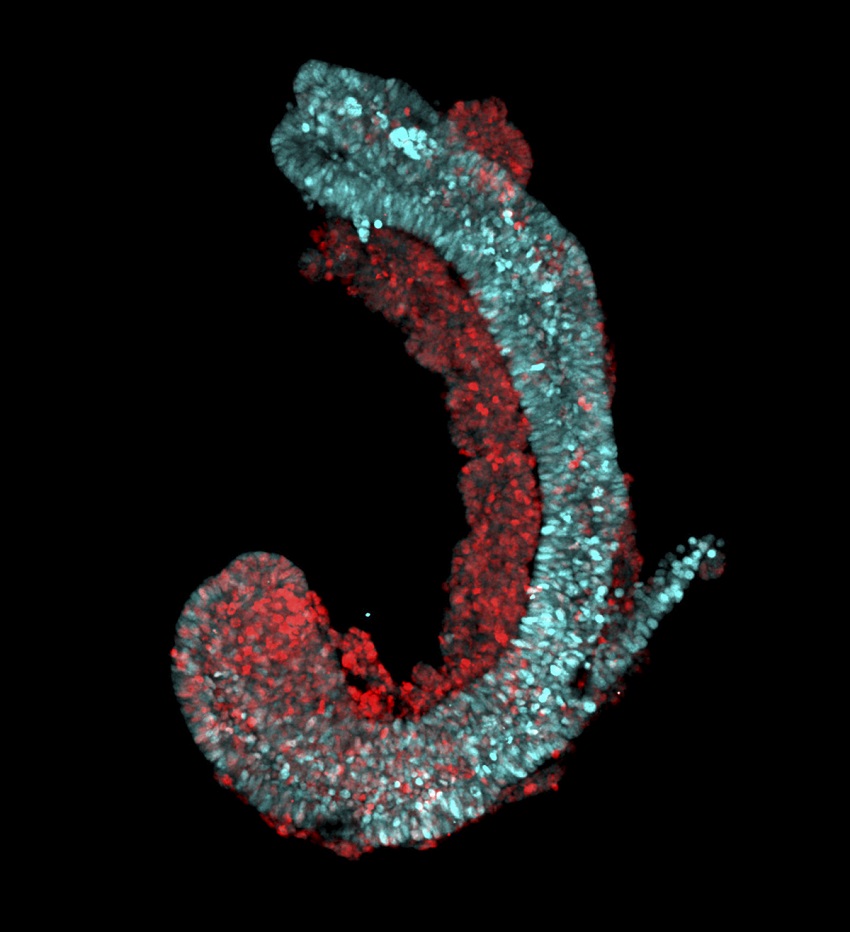Stem cells self-organise into trunk-like structures.
Source: Cosmos Magazine
Growing an embryo outside the body may not be that far away.
German scientists report that they have successfully simulated an important phase of the process by growing mouse embryonic cells in a petri dish. The structure was the central trunk, which holds the developing neural tubes that will become the spinal cord.
The trunk also had cells that were the precursors for the skeleton, cartilage, muscle, and internal organs like the intestine. Together, this closely paralleled real embryo development in the womb.
In a paper published in Science, the team led by Germany’s Max Plank Institute for Molecular Genetics describes how a special gel full of proteins helped the suspended cells keep shape while developing. They were then also able to dissolve the cells to study them individually.
Unlike in fish or birds, mammal embryos implant on the side of the uterus early in development, which makes it too difficult to see. The embryo also undergoes profound changes during this time, so being able to observe this process completely changes how researchers can study life.

The new approach “starts a new era” in embryonic development, says co-author Bernhard Herrmann. “This allows us to observe embryogenesis of the mouse directly, continuously, and with large parallel numbers of samples – which would not be possible in the animal.”
This method also eliminates heavy reliance on extracting embryos from animals, so fewer mice will be needed to continue the research. It also provides more clarity on processes in close to real time.
“We can obtain more detailed results more quickly, and without the need for animal research,” says Alexander Meissner. “Of the more complex processes such as morphogenesis, we usually only get snapshots, but this changes with our model.”
Previously, embryo cells grown in a petri dish did not arrange into the structures that normal embryos do, thus they didn’t reflect normal embryos. The special gel changes that.
“The gel provides support to the cultured cells and orients them in space; they can distinguish inside from outside, for example,” says co-lead author Jess Veenvliet. “The cells are able to establish better communication, which leads to better self-organisation.”
They also introduced known genetic mutations and manipulated different process with chemical changes and found that the trucks reacted in a similar way to normal embryos, suggesting this technique will provide a good system to test other unknown mutations.
“Even though not all cell types are present in the trunk-like structures, they are strikingly similar to an embryo of the same age,” says Adriano Bolondi. “We found that all essential marker genes were activated at the right time in the right places in the embryoids, with only a small number of genes being out of line.”
Source: Cosmos Magazine

































Leave a Comment
You must be logged in to post a comment.